
Sure, Paris is pretty and Venice is full of old-world charm but Brits hankering for a cultural getaway can always look a little closer to home. The UK is home to more than its fair share of beautiful cities crammed with history, culture, good food and great shopping. From the boutique hotels to book to the restaurants not to miss, here’s our guide to the best UK city breaks.
Bristol
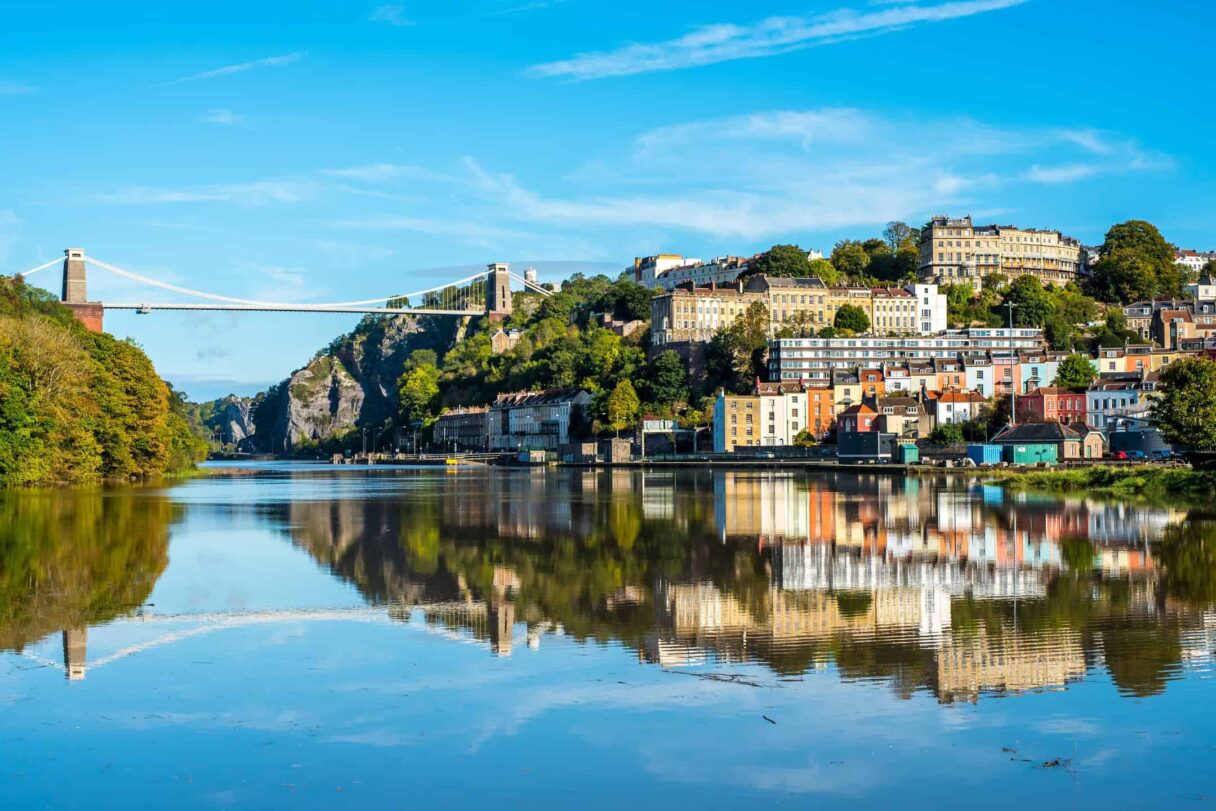
Image: Shutterstock
When to visit: Home to two large universities, Bristol is a youthful, creative city full of independent boutiques, great nightlife and plenty of culture. That said, if you’re not keen on joining in on the madness of Freshers’ Week, it’s probably best avoided in September (and June, when restaurants heave with the families of the recently graduated). Easter and summer, when the weather is warmer and the students have departed, are brilliant times to explore.
What to do: There are plenty of museums, galleries and attractions to keep you busy in Bristol (the SS Great Britain, We The Curious museum and Bristol Zoo Gardens among them) but the city is really best experienced by wandering the streets and soaking up the atmosphere. Start in the newly regenerated Harbourside district before heading into the old town and stopping for lunch at St Nicholas’ Market. Then climb uphill to Clifton and grab a table at one of the many pubs overlooking the famous suspension bridge before heading to the arty Gloucester Road area for dinner.
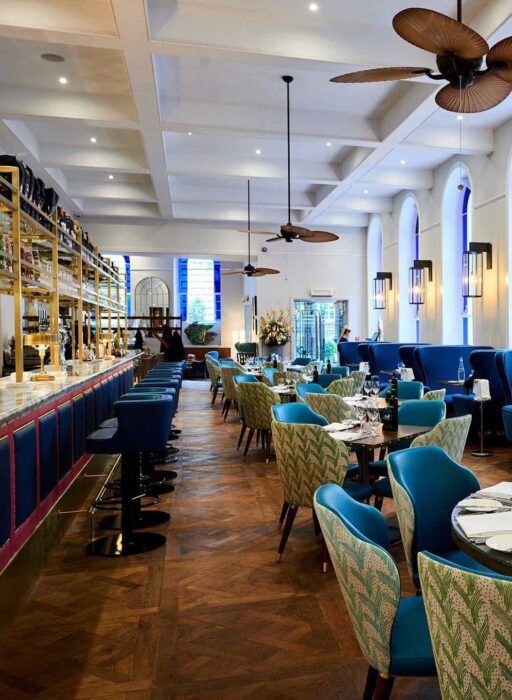
Bristol Harbour Hotel
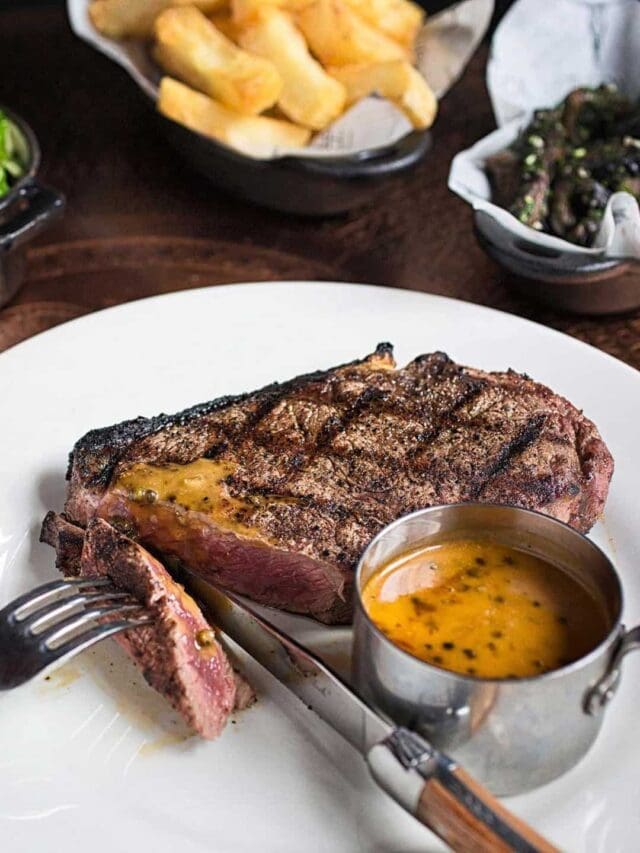
The Ox Bristol
Where to eat: Bristol has been the epicentre of a culinary explosion over the past few years, with many chefs who cut their teeth at London’s fine dining restaurants heading west to break out on their own in a more affordable location. Among them is Rock Salt, a fusion restaurant specialising in Indian and Chinese cuisine founded by Harris Massey of Dishoom and Kedar Subedi of Dhamaka. Quality meat is also having a moment in Bristol. Head to The Ox, tucked away beneath a Wetherspoons on Corn Street, for one of the city’s best steaks or the waterside Spitfire restaurant for locally-sourced meats barbecued over hot coals.
Where to stay: The 42-room boutique Bristol Harbour Hotel is housed in a Grade II-listed building minutes from the city centre. Luxuriously appointed rooms are complemented by an in-house seafood bar, grill and cocktail bar, as well as full-service spa with hydrotherapy pool, sauna, steam room, gym and extensive range of ESPA treatments. Perfect after a long day of sightseeing.
Belfast
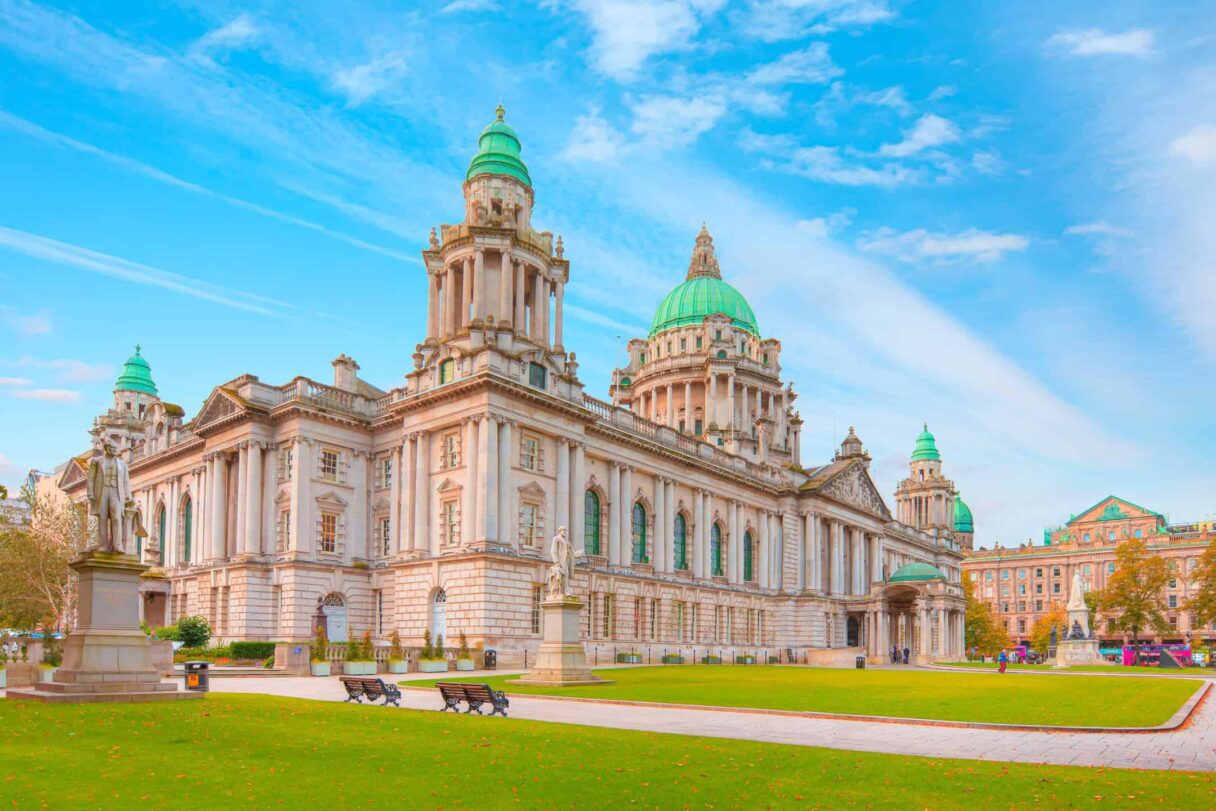
Image: Shutterstock
When to visit: Belfast is beautiful year-round, but with the city subject to 200 days of rain annually, you’re better off visiting between April and October to avoid a proper drenching. If you’re not averse to a little precipitation, it’s definitely worth making a trip for the city’s spectacular St Patrick’s Day celebrations in March.
What to do: From the old linen mills in the south of the city, to the murals of Shankill in the north west, the streets of Belfast are bursting with rich industrial and political heritage. Home to the infamous Titanic, the aptly-named waterfront Titanic Quarter is perfect for history buffs who wish to immerse themselves in memories of the city’s maritime heyday with a tour of Titanic Belfast and the SS Nomadic – the world’s last remaining White Star vessel and RMS Titanic’s original tender ship. Elsewhere, take in traditional Irish culture with a wander through the Gaeltacht quarter, or stop off at St Anne’s Square to pay a visit to the Metropolitan Arts Centre and take a stroll through the city’s ancient cobblestone streets.
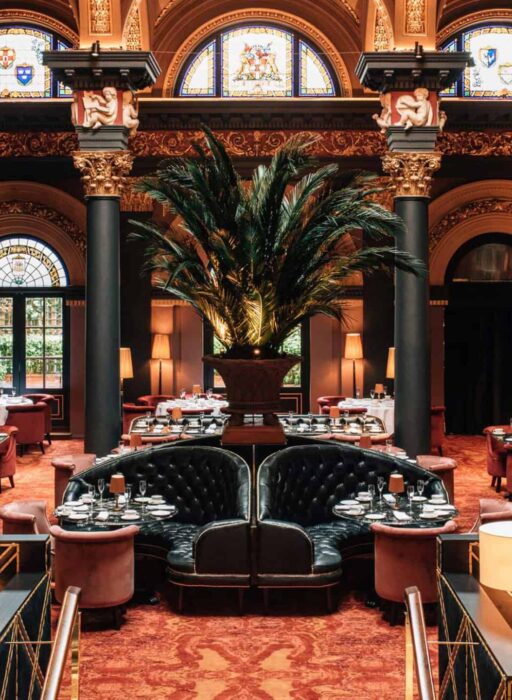
The Merchant Hotel
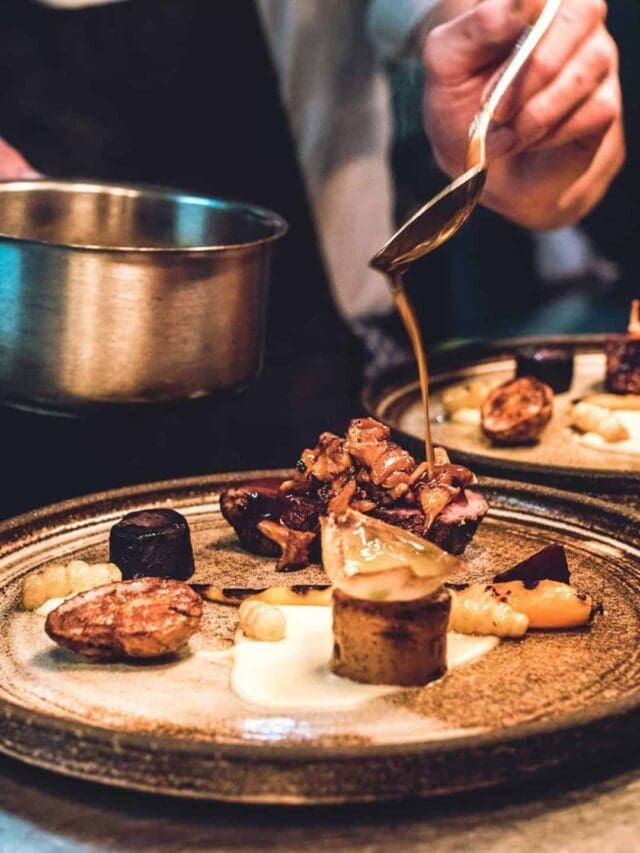
The Muddlers Club
Where to eat: Fans of seafood will find no shortage of fantastic eateries to suit their tastes, but the city’s culinary cache doesn’t end there – centuries of international trade and Belfast’s portside location have left their mark, with global influences seeping into every corner of the city centre. Book a table at Ox for top-quality seasonal French-Irish fare and local libation overlooking the River Lagan (think châteaubriand with black garlic, ox tongue, squash, buckwheat and county Donegal An Dúlamán gin), or pay a visit to any one of Michael Deane’s six restaurants for a taste of the local legend’s lauded cooking.
His flagship venue Eipic holds a Michelin star, while the Deanes at Queens restaurant, bar and grill in the city’s bustling university quarter boasts a Bib Gourmand and serves up bar snacks all day. Elsewhere, the city’s worst-kept culinary secret, The Muddlers Club (so-called after a 200-year-old secret society), sits nestled in the historic back streets of the Cathedral Quarter, offering straightforward modern dishes that put local ingredients centre stage.
Where to stay: Once headquarters of the Ulster Bank, The Merchant Hotel now houses three restaurants including a Victorian great hall, 1920s jazz bar and traditional Irish pub. The imposing Grade-A listed sandstone building is conveniently situated in the city’s central Cathedral Quarter, with luxuriously appointed rooms in authentic Victorian and Art Deco styles to complement the building’s rich history. Relax in the spa after a long day of sightseeing or take in the city skyline in the rooftop hot tub with a tipple from the hotel’s multi-award-winning cocktail bar.
Glasgow

Image: Shutterstock
When to visit: A former European Capital of Culture, Glasgow hums with life year-round but is at its best between March and August when locals and tourists are lured into the city’s squares and parks by good weather and longer days.
What to do: As well as numerous internationally renowned art galleries and a burgeoning independent film scene, thanks in large part to the ever-growing Glasgow Film Festival, Glasgow has also become the go-to destination for independent breweries and distilleries in Scotland. Among the finest are the Clydeside Distillery, which produces fine whiskies on the banks of its namesake river, and the Drygate Brewery, which houses a micro-brewery, beer hall and restaurant.
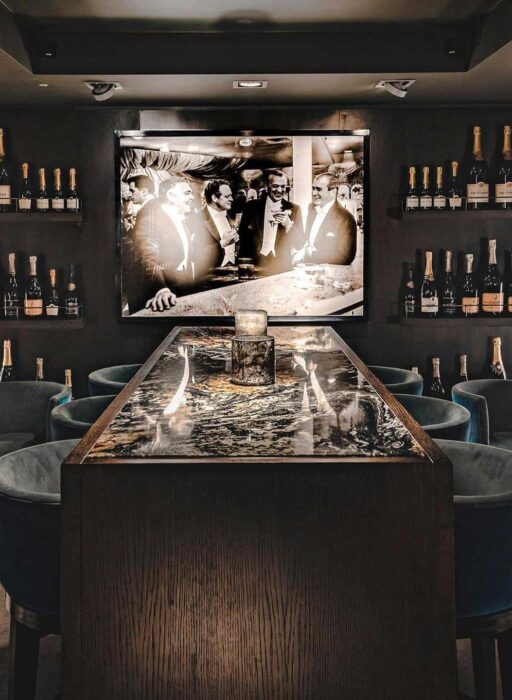
The Champagne Room in Dakota Glasgow
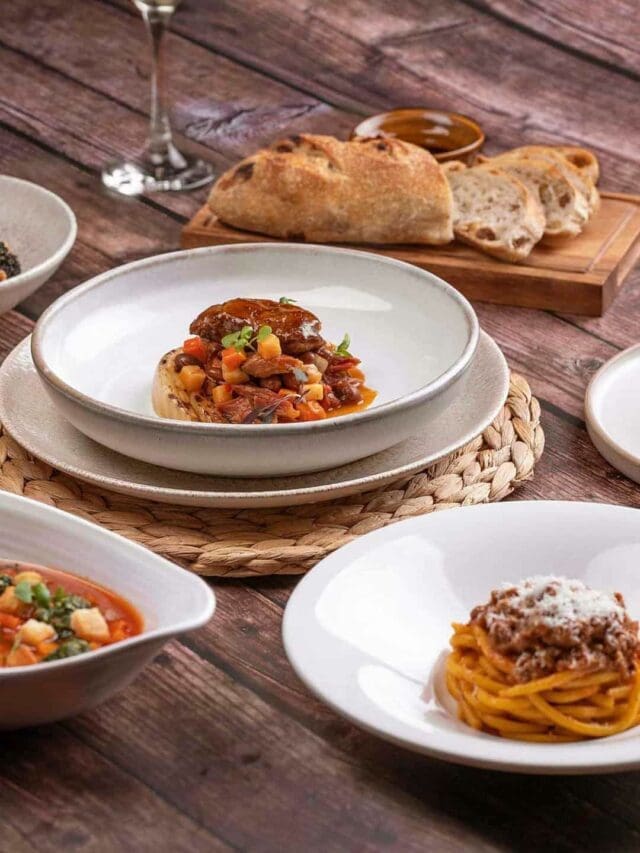
Six By Nico
Where to eat: Six by Nico was founded by Italian-Scottish chef Nico Simeone and has outposts in Edinburgh, London, Belfast, Liverpool and Manchester. The restaurant offers a new, story-driven six-course tasting menu every six weeks. Tables fill up fast so book early to try Simeone’s inventive dishes, which include shellfish risotto, black pollock, confit chicken ballotine with baked salted caramel delice to finish. For something more casual, the Hanoi Bike Shop is a must for hearty Vietnamese classics perfect for refueling at any time of day.
Where to stay: Named for the Dakota airliner that epitomised the luxury of the Golden Age of travel, Dakota Glasgow is one of a growing chain of hotels created by Glaswegian Ken McCollough, and designed by his wife Amanda, that aims to bring New York-worthy luxury to the major cities of Scotland and northern England. Located on a quiet side street just moments from Glasgow’s main shopping and entertainment district, it’s a great base for sightseers, while those in town for celebrations will enjoy its chic interior design, champagne room, cigar terrace and lively bar.
Manchester
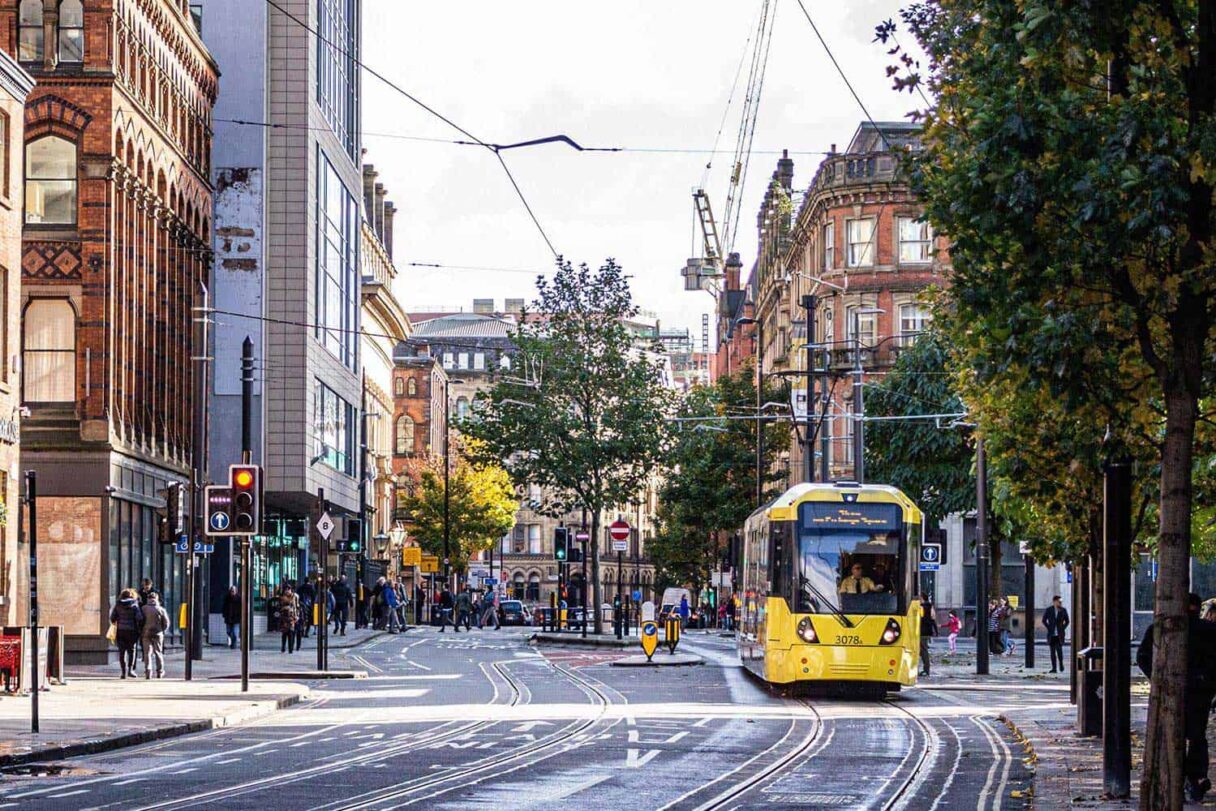
When to visit: As the UK’s second city, there’s no true ‘low season’ in Manchester – although if you plan on spending lots of time outdoors you might want to avoid visiting between November and March. The North has a reputation for rain for a reason.
What to do: While there is plenty to keep families busy in Manchester, those able to leave little ones behind for a weekend will be blessed with the opportunity to discover the city’s thriving music scene. Whether it’s a gig by a homegrown band at Soup Kitchen, disc diving at one of the many second-hand vinyl stores or raving into the night at the Warehouse Project, whatever your musical tastes, Manchester’s plethora of venues are guaranteed to satisfy – and they could use your support now more than ever.
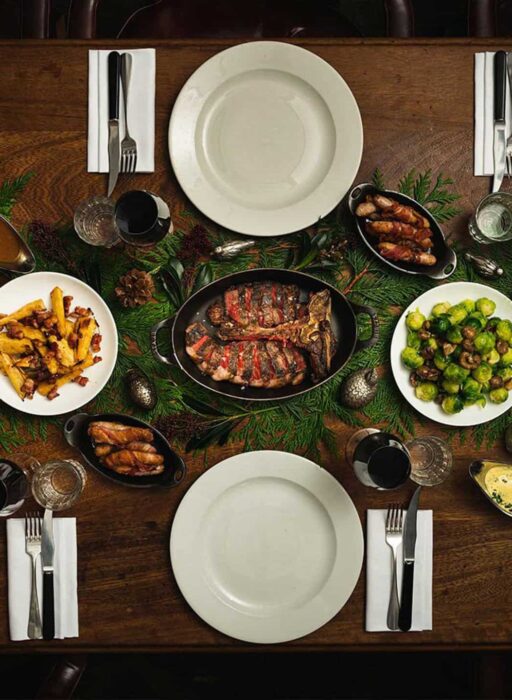
Hawksmoor
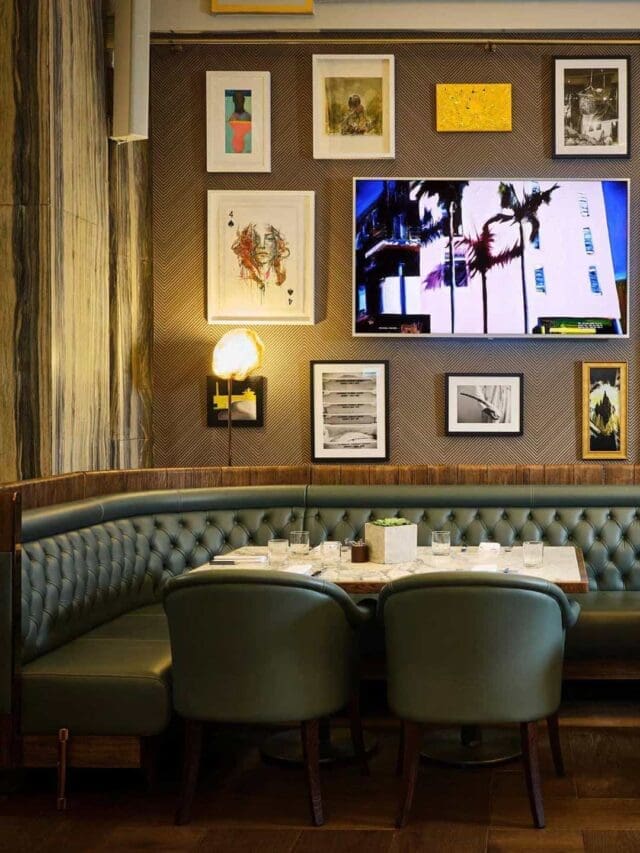
Stock Exchange Hotel
Where to eat: Not afraid of a challenging menu? In 2019, Mana received Manchester’s first Michelin star since 1977 but the cooking, which champions under-represented British ingredients, might not be for everyone. If celeriac mould on toast and salt-aged duck hung over burning grape vines doesn’t sound like quite your thing, crowd-pleasing fare can be found at local favourites Hawksmoor, Dishoom and Honest Crust.
Where to stay: A relative newcomer to Manchester’s hospitality scene, having opened in late 2019, the Stock Exchange Hotel received stellar reviews in the few months it was able to operate. Centrally located between King Street and Market Street, homage has been paid to its history as the former Manchester stock exchange in the form of vintage photography, black and white marble floors and soaring ceilings. Tom Kerridge has also set up shop in the hotel’s Bull & Bear restaurant, so great food is guaranteed.
York
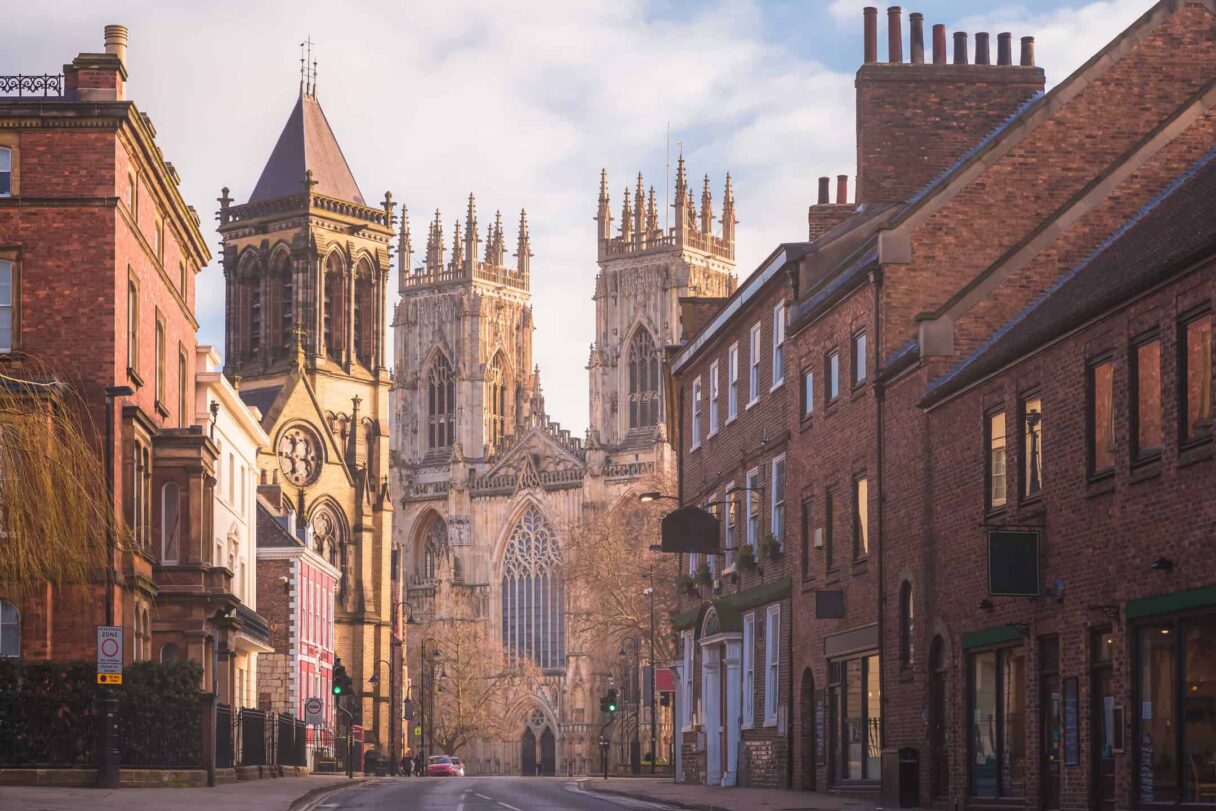
Image: Shutterstock
When to visit: York didn’t gain the moniker ‘City of Festivals’ for nothing. With events covering everything from fashion and literature to Vikings and ice sculptures, there’s really no bad time to visit if you’re looking for quirky local culture. Foodies should time their visit with the seasons. With many of the city’s restaurants using produce straight from the Dales, the harvest months of September and October are heaven for epicureans.
What to do: History buffs will find much to love in York. From museums dedicated to the city’s time under Viking rule to a lengthy stroll along the Roman city walls or a visit to Clifford’s Tower, a ruined Norman keep at the centre of York Castle, a weekend in York can feel like an extended episode of Time Team. If that’s not your thing, the winding streets of the old quarter are home to plenty of brilliant independent shops and cafes.
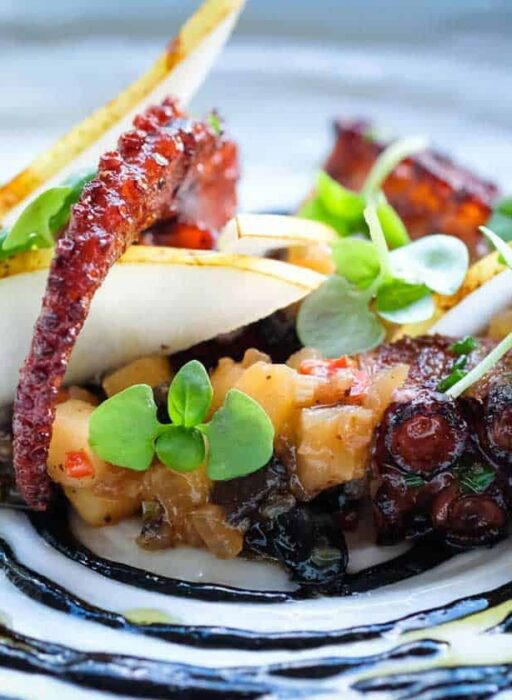
Skosh
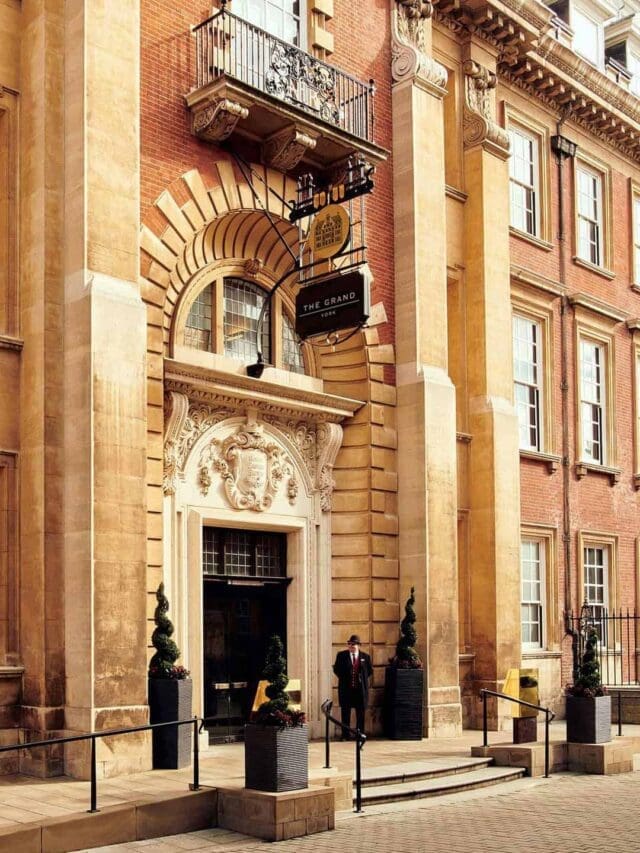
The Grand, York
Where to eat: While there’s no shortage of great British eateries waiting to serve up some of Yorkshire’s finest produce, York is also home to a diverse culinary culture with influences from all over the world. Take Skosh, for example. Regularly voted the city’s best restaurant, this small plates eatery serves an eclectic menu ranging from pheasant yakitori to ceviche of wild brill in the surrounds of a Grade II-listed building.
Where to stay: The Grand York is the city’s only five-star hotel and its reputation more than precedes it. Housed in an imposing Edwardian building close to all York’s major attractions, the period features of the former HQ of the North Eastern Railway Company have been combined with contemporary interior design to offer a classically modern hotel complete with whisky lounge, two restaurants, a gin bar, spa and gym.
Edinburgh
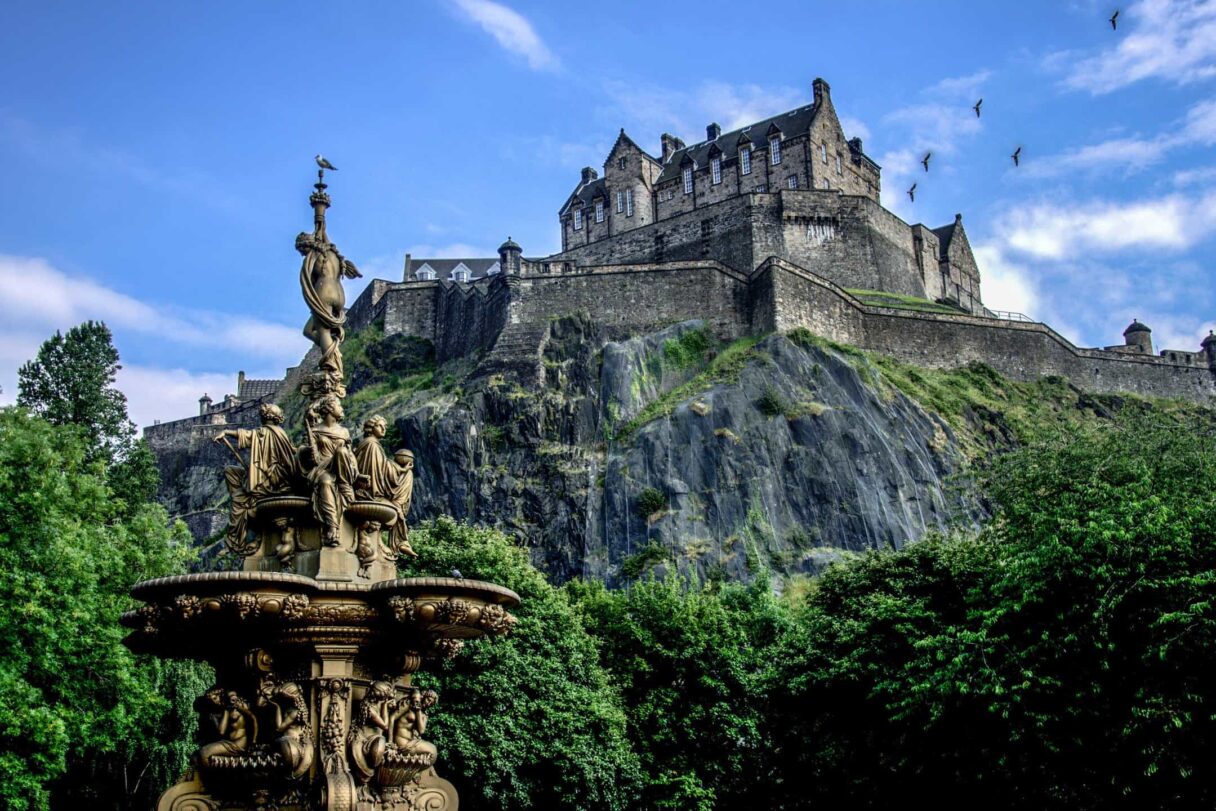
Image: Shutterstock
When to visit: Not averse to a crowd? Edinburgh comes alive during its famous Hogmanay celebrations (and is an enchanting place to spend Christmas) and in August, thanks to the Edinburgh Fringe festival. If you prefer to explore at a slower pace, the city is particularly lovely between May and July.
What to do: If it’s your first time in Edinburgh there are certain must-dos: the castle, a walk down the Royal Mile and a hike up to Calton Hill or Arthur’s Seat. If you’re a return visitor, why not dig deeper into the city’s world-class art scene? The Scottish National Portrait Gallery, National Galleries of Scotland and Scottish Gallery of Modern Art all call Edinburgh home and have given rise to numerous smaller galleries displaying works by some of Scotland’s finest homegrown artists.
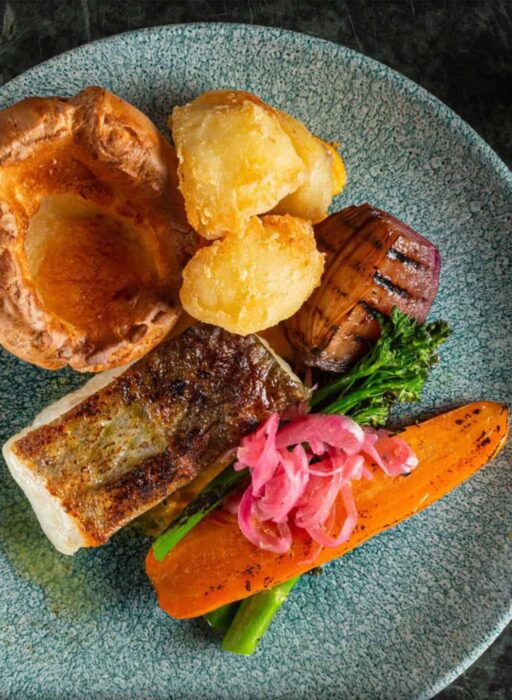
The Bon Vivant
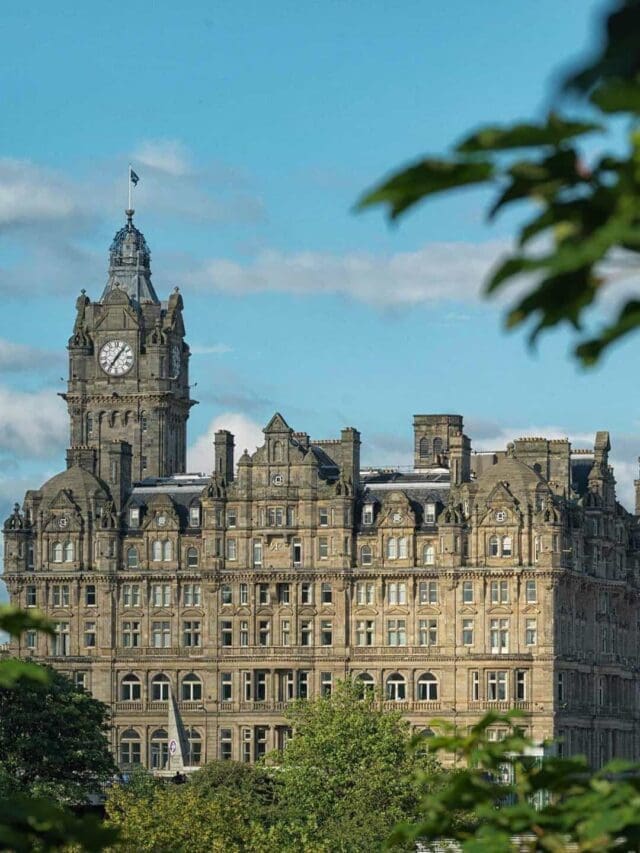
The Balmoral Hotel
Where to eat: Alongside its traditional pubs, Edinburgh has a thriving modern fine dining scene that runs the gamut from contemporary Scottish fare to cuisines hailing from North Africa and Eastern Europe. Book a table at The Bon Vivant on Thistle Street for elevated Scottish classics (think haggis bon bons and venison pasties) while IJ Mellis, a purveyor of fine local produce with a small bar offering meat, cheese and wine, is the perfect midday pitstop. Nordic-inspired cuisine is also a favourite in the city and Fhior, founded by chef Scott Smith, is offering some of the most creative cooking.
Where to stay: Home to lavish suites, Ritz-worthy afternoon teas, a Michelin-starred restaurant and the city’s most luxurious spa, check in to The Balmoral and you might find yourself reluctant to leave. Designed as a Victorian railway hotel over a century ago, its ornate grandeur dominates the eastern end of Prince Street and belies contemporary interiors by Olga Polizzi. Service is, as you’d expect, impeccable and its well-connected concierge, who can always get you a seat at the best table in town, is worth the price of a room alone.
Bath
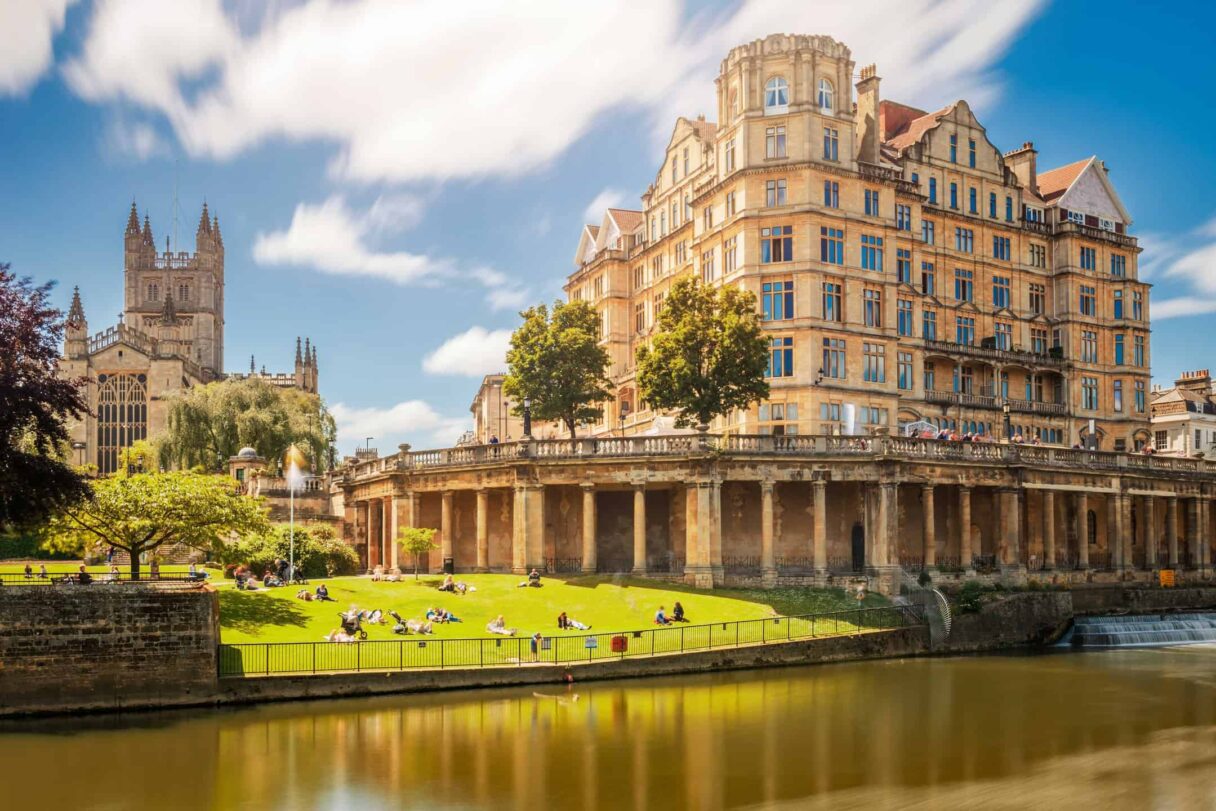
Image: Shutterstock
When to visit: As with most British cities, Bath is at its best during the summer months. Be warned, however, Bath is not a big city and its main attractions can quickly become overwhelmed during school holidays. June and July are ideal.
What to do: There are two key pillars to Bath’s appeal: wellness and history. While fans of the latter make a beeline to the Royal Crescent to marvel at its iconic architecture and walk in the footsteps of former resident Jane Austen, the two can be easily combined with a trip to the world-famous Roman Baths. The cleverly-designed complex offers a peek at the city’s ancient foundations while the multi-level thermal spa allows for utter relaxation with spectacular views.

The Royal Crescent Hotel
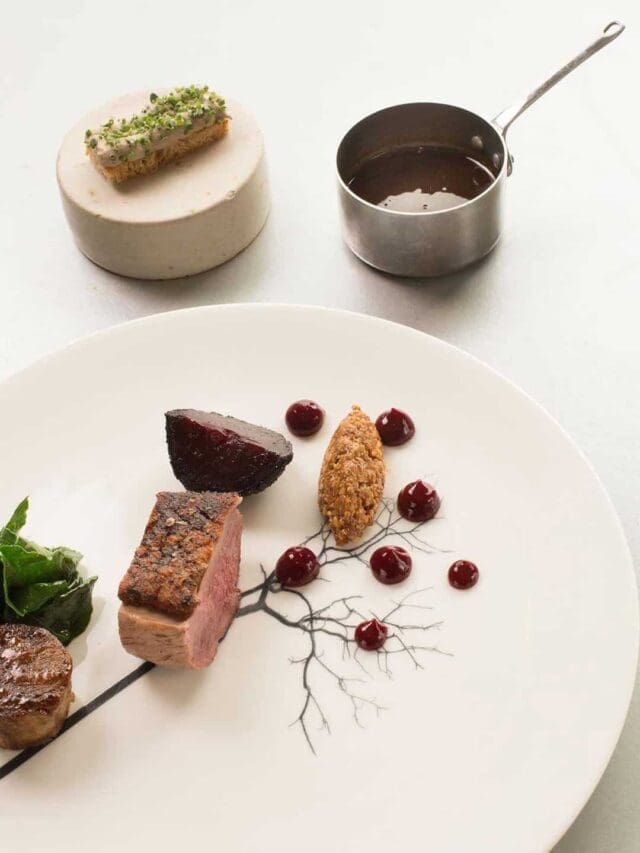
The Olive Tree
Where to eat: The proud owner of Bath’s only Michelin star, The Olive Tree in the Queensberry Hotel, is an unassuming restaurant whose success is testament to the skill of chef Chris Cleghorn. His creative dishes include raw Orkney scallops with pink grapefruit, and Cornish turbot with Roscoff onions and caviar; perfect for special occasions. For something more casual, Corkage on Chapel Row offers expertly executed small plates alongside one of the city’s most varied wine lists.
Where to stay: Spread across two Grade I-listed townhouses in what is undoubtedly Bath’s most prestigious address, the five-star Royal Crescent Hotel & Spa has an illustrious history playing host to dukes, duchesses and Britain’s society elite for more than 250 years. Today it attracts a similarly discerning clientele looking to sample a quintessentially English slice of old-world glamour. The in-house spa and David Campbell-helmed Dower House restaurant are particular highlights.
Read more: The best luxury hotels in Cornwall
The post The best UK city breaks: Where to stay, eat and what to do appeared first on Luxury London.
